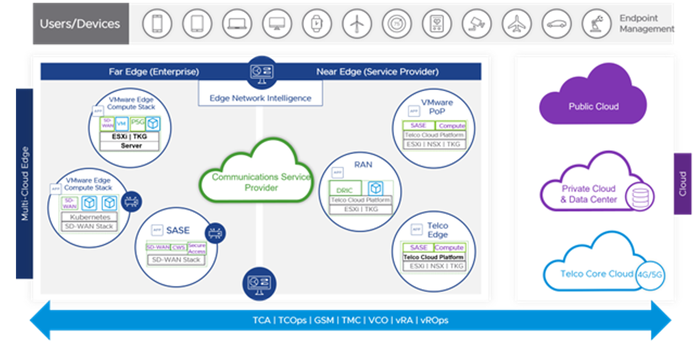Drawing a Concise Road Map for Enterprise Edge Computing DeploymentsDrawing a Concise Road Map for Enterprise Edge Computing Deployments
Edge computing is quickly transitioning from a theoretical concept to a realistic deployment option in the enterprise. What’s been missing, however, is a detailed technical framework that IT architects can use as a guide.
December 17, 2021

For many enterprise market verticals, edge computing is shifting away from being a far-off concept to a realistic option driven by business necessity. Many modern applications now require bidirectional, low-latency response times for distributed workforces. Enterprise use-case examples include the use of augmented reality (AR) within warehouses and manufacturing plants, remote healthcare patient monitoring, cloud gaming services, and asset/fleet tracking.
One challenge of edge computing is that most of the technical content available today remains theoretical in nature. Thus, navigating the murky waters of complex edge computing deployments without sufficient technical guidance may discourage those that are actively seeking it. But there’s good news – edge computing vendor road maps are finally beginning to be released.
Why are technical road maps so important?
Technical road maps for emerging technologies consist of a few key elements. The first is the framework itself. This often includes content regarding a thorough explanation of what the technology is along with nomenclature used to define new concepts, components, and solutions. Next, the framework usually includes mention of what's in or out of scope along with a long-term perspective on where the technology is likely to head in the market. Finally, given what's possible with today's technology, a road map helps outline how to build and integrate the new technology solution into existing enterprise infrastructures. Thus, with these elements combined, a technology road map helps usher enterprise IT architects toward a "best practice" deployment as was intended by the technology manufacturer.
Edge computing strategies are beginning to emerge
We're finally beginning to see content from edge computing technology vendors that provide methodologies, standards, data security details, and implementation guidance that network, application, and server architects are seeking. VMware is one such vendor that announced its architectural vision and lays out how enterprises can integrate edge computing into their existing infrastructures.
A recent VMware announcement and keynote address at the 2021 VMworld conference proves that edge computing is not only ready for real-world use-case deployments but also that the company has spent ample time creating a well-devised architecture solution that customers can use as a guide. A perfect example of this is how VMware not only defines their interpretation of what edge computing means for the enterprise – but they go so far as to create new edge definitions like "near edge" and "far edge" locations that help architects differentiate between edge-native workloads that are placed somewhere between the cloud and end-user and those workloads that are strategically placed at a customer location. Additionally, supplemental content such as how to secure edge environments using a software-defined service edge (SASE) is included to provide a more holistic look from a deployment perspective. This type of information, in addition to an architectural diagram (shown below) and component definitions, help architects understand and visualize how VMware's edge solution could be integrated into their own network.
<< insert image >>

edge architecture.png
(VMWare Edge Architecture)
Once road maps arrive, deployments tend to follow
Because of the distributed nature of edge computing and the need to tap into an entire ecosystem of networks, services, and platforms, VMware and other edge computing vendors understand that it's their responsibility to succinctly define their edge vision so that all the various technology interoperations and dependencies will function as intended. For example, modern edge computing architectures will likely include technologies such as:
multi-edge/cloud points of presence (PoPs)
edge-native apps and services
AI/machine learning workloads
Network transport technologies such as 5G and open RAN
Infrastructure overlay platforms and SD-WAN for monitoring/performance, and
SASE-derived security integrations
As you can imagine, getting all these technologies to play nice without the right guidance can leave enterprise IT shops in the dark. In fact, these types of complex, multi-cloud designs often require tight coordination and planning with the various edge computing hardware/software manufacturers and service providers. Thus, vendors such as VMware are taking it upon themselves to do the heavy lifting on their customers' behalf. They know that an edge computing road map isn't a "nice to have" but a "must-have."
Eventually, expect even more architecture-specific content to be released by VMware and others in the coming months. Undoubtedly, for VMware, this will take their recently released edge architectural model and bring it down to a far more granular level that includes specific deployment options and configuration examples. Once this type of detailed integration information is released and consumed by enterprise architects, expect edge computing to take off in a very big way.
About the Author
You May Also Like




